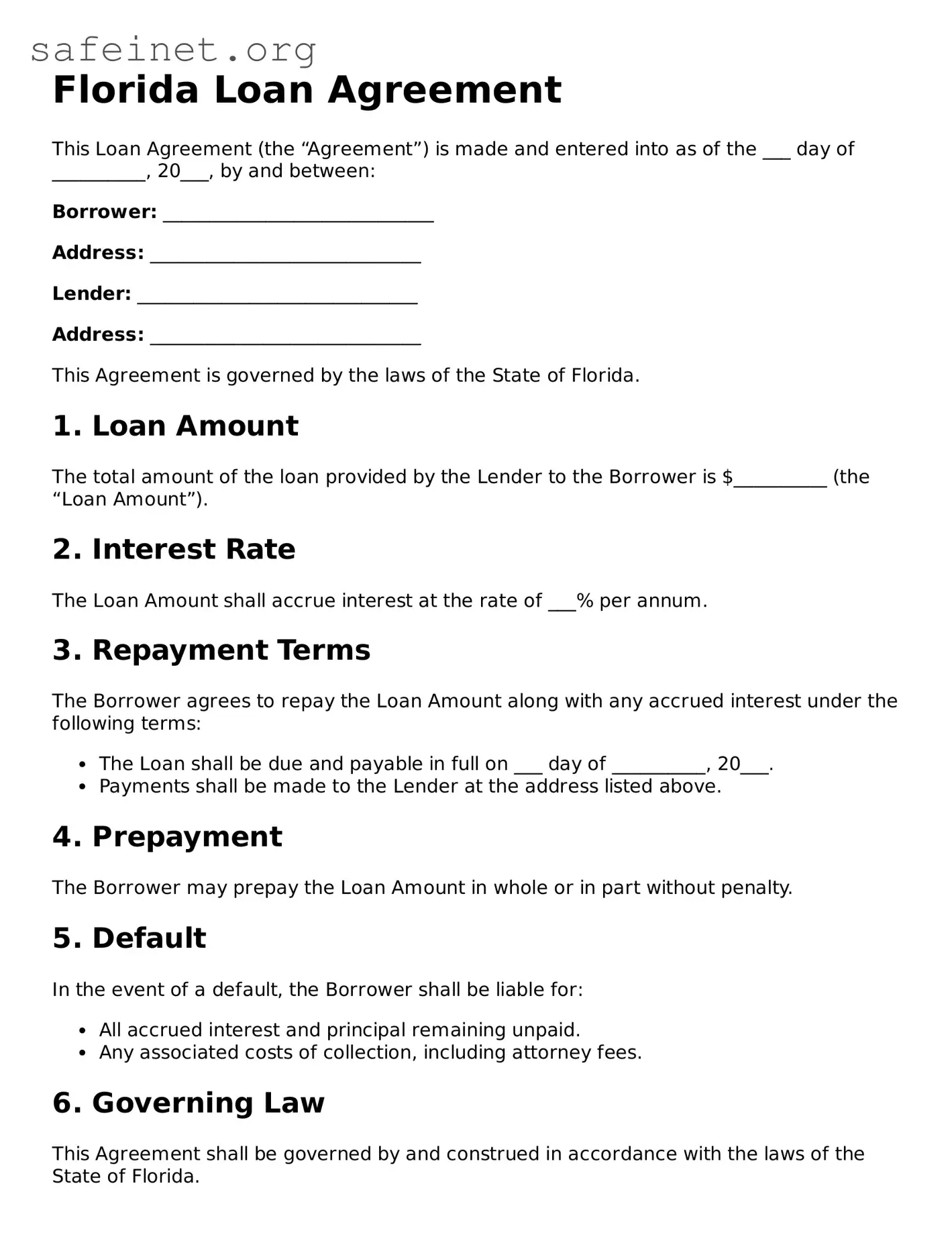Florida Loan Agreement
This Loan Agreement (the “Agreement”) is made and entered into as of the ___ day of __________, 20___, by and between:
Borrower: _____________________________
Address: _____________________________
Lender: ______________________________
Address: _____________________________
This Agreement is governed by the laws of the State of Florida.
1. Loan Amount
The total amount of the loan provided by the Lender to the Borrower is $__________ (the “Loan Amount”).
2. Interest Rate
The Loan Amount shall accrue interest at the rate of ___% per annum.
3. Repayment Terms
The Borrower agrees to repay the Loan Amount along with any accrued interest under the following terms:
- The Loan shall be due and payable in full on ___ day of __________, 20___.
- Payments shall be made to the Lender at the address listed above.
4. Prepayment
The Borrower may prepay the Loan Amount in whole or in part without penalty.
5. Default
In the event of a default, the Borrower shall be liable for:
- All accrued interest and principal remaining unpaid.
- Any associated costs of collection, including attorney fees.
6. Governing Law
This Agreement shall be governed by and construed in accordance with the laws of the State of Florida.
7. Signatures
By signing below, both parties agree to adhere to the terms laid out in this Agreement.
Borrower Signature: _____________________________
Date: ______________________
Lender Signature: _____________________________
Date: ______________________
